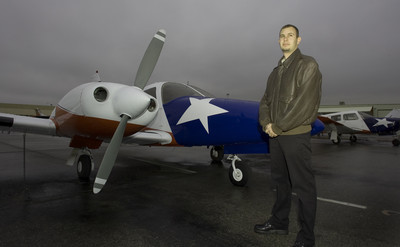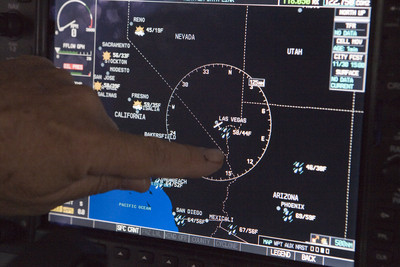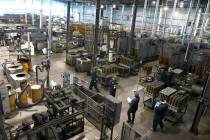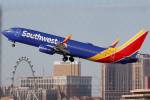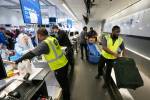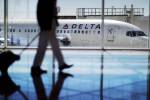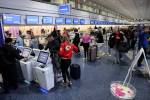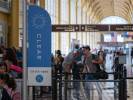Flight schools reach for sky again
It's tough to imagine how Casey Arnott could recapture the feeling of freedom he had learning to fly at age 12 in the homemade aircraft a neighbor built from a kit.
But for Arnott, 24, that moment was an introduction to flight, not a pinnacle.
Since then he's invested years of his life and tens of thousands of dollars to make flying a career.
Arnott recently completed certification for a commercial multiengine pilot license and has landed a job flying for a skydiving company.
He's hopeful the entry-level position will be the takeoff point to a career flying corporate jets or hauling packages for a company like FedEx.
"There is nothing more fun to me than getting paid to go fly," Arnott said recently as he checked out the fleet of tiny Pipers and Cessnas at West Air Aviation at the North Las Vegas Airport.
Flight schools are rebounding from a slump that reached its nadir shortly after the Sept. 11, 2001, terrorist attacks when new restrictions helped wipe all but the strongest schools off the radar.
John Giles, chief executive officer of West Air, said 10 years ago there were seven flight schools in Las Vegas. That number dipped as low as three and only recently rebounded to five, he said.
For a time after the attacks, entire swaths of airspace were closed off, a situation that spelled doom for schools that used the space.
"Some of the schools were on the edge, so they just closed up," Giles said.
"We couldn't fly in what they call class bravo for about 20 days," he said, referring to the tightly controlled airspace near busy airports.
The easing of the most onerous post-Sept. 11 restrictions, an increase in demand for air travel and a shortage of pilots -- especially at entry level jobs -- are helping drive the resurgence.
Also, there are other, longer-term trends contributing to more demand for flight school training in the United States.
One trend is toward fewer pilots in general.
The Aircraft Owners and Pilots Association, a national organization with about 414,000 dues-paying members, reports that the number of licensed pilots has declined about 25 percent in the past 25 years.
At the same time, the military is training fewer pilots. The association reports that 60 percent of airline pilots, for example, get their training from civilian instructors.
Aspiring pilots are now likelier to go from civilian training to entry-level jobs that can lead to an opportunity to fly for an airline, which requires additional certification and training through the airline.
"There was a shift in how the airlines wanted their pilots trained," association spokeswoman Kathleen Vasconcelos said. "From day one (prospective airline pilots) are being immersed in airline procedures and how to work as a crew."
Flight schools are beginning to rebuild the number of licensed pilots. Since 1997 the number of licensed pilots rebounded 6 percent.
Vincent Wood, 24, of Las Vegas, is among the newest generation of licensed pilots.
Wood, another of the approximately 110 students at West Air Aviation, comes from a family of private pilots.
He decided to build on the background by becoming a professional pilot, a big change from his most recent work as a restaurant server.
Using proceeds of a legal settlement resulting from a car wreck, Wood enrolled in flight school and is about to achieve the certification he needs to start work as a pilot. Wood said he's invested about $30,000 in training so far. Soon, he'll embark on recouping the investment.
"You always have to start at the bottom," Wood said. "You have to find someone willing to hire you with low hours."
He said he's fortunate to have a girlfriend to help make ends meet and take care of their son.
"I don't have to make $40,000 a year now to pay the bills," Wood said.
That's good news.
Because despite demand for entry level pilots, pay remains modest.
Low-level cockpit positions for a regional carrier -- jobs that require an air transport license and as much as 1,000 hours experience -- pay about $13 to $20 an hour, Giles said.
Fortunately for pilots, they pay gets better.
Within three to four years a pilot can earn $50,000 annually or more. After eight to 10 years pilots can make more than $100,000, Giles said.
Competition for jobs intensifies at higher levels, though.
Las Vegas-based Allegiant Air, one of the nation's fastest-growing airlines, receives about 100 pilot résumés per month.
Since 2005 the airline has increased the number of pilots it employs from 120 to 245. Despite growing the ranks of pilots, Allegiant maintains high standards for new hires.
"For us, it is the competition to get the best pilots," Allegiant spokeswoman Tyri Squyres said.
The minimum qualifications include an air transport pilot certificate and 3,000 hours of experience.
But the average new hire has about 5,000 hours of experience, Squyres said.
Once on board, Allegiant hires spend five weeks in classroom training and 40 hours in a MD-80 aircraft simulator.
The reward is good pay, flexible hours and an airline job on routes into and out of Allegiant bases in Las Vegas, Florida and Arizona. That means pilots start and end their shifts in the same location, a perk that attracts applicants from other airlines and the corporate jet world.
"They can base in one city and sleep here at night, wake up with their families," Squyres said.
"It is a different quality of life."
This story first appeared in the Business Press. Benjamin Spillman writes for the Business Press' sister publication, the Las Vegas Review-Journal. He can be reached at bspillman@reviewjournal.com or 477-3861.



